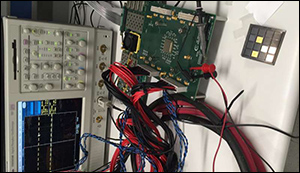World’s First 1,000-Processor Chip
20. 6. 2016 | University of California, Davis | www.ucdavis.edu
Amicrochip containing 1,000 independent programmable processors has been designed by a team at the University of California, Davis, Department of Electrical and Computer Engineering. The energy-efficient KiloCore chip has a maximum computation rate of 1.78 trillion instructions per second and contains 621 million transistors.
The KiloCore chip was fabricated by IBM using their 32 nm CMOS technology. Each processor core can run its own small program independently of the others, which is a fundamentally more flexible approach than so-called Single-Instruction-Multiple-Data approaches utilized by processors such as GPUs; the idea is to break an application up into many small pieces, each of which can run in parallel on different processors, enabling high throughput with lower energy use.

Because each processor is independently clocked, it can shut itself down to further save energy when not needed. Cores operate at an average maximum clock frequency of 1.78 GHz, and they transfer data directly to each other rather than using a pooled memory area that can become a bottleneck for data.
The 1,000 processors can execute 115 billion instructions per second while dissipating only 0.7 Watts, low enough to be powered by a single AA battery. The KiloCore chip executes instructions more than 100 times more efficiently than a modern laptop processor.
Read more at University of California, Davis
Image Credit: University of California, Davis
-jk-




